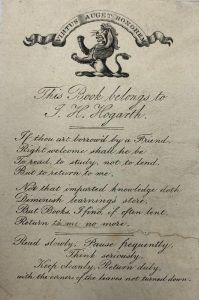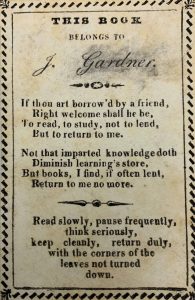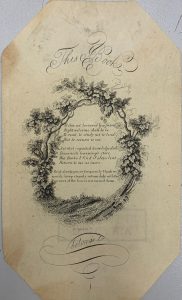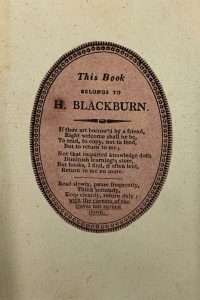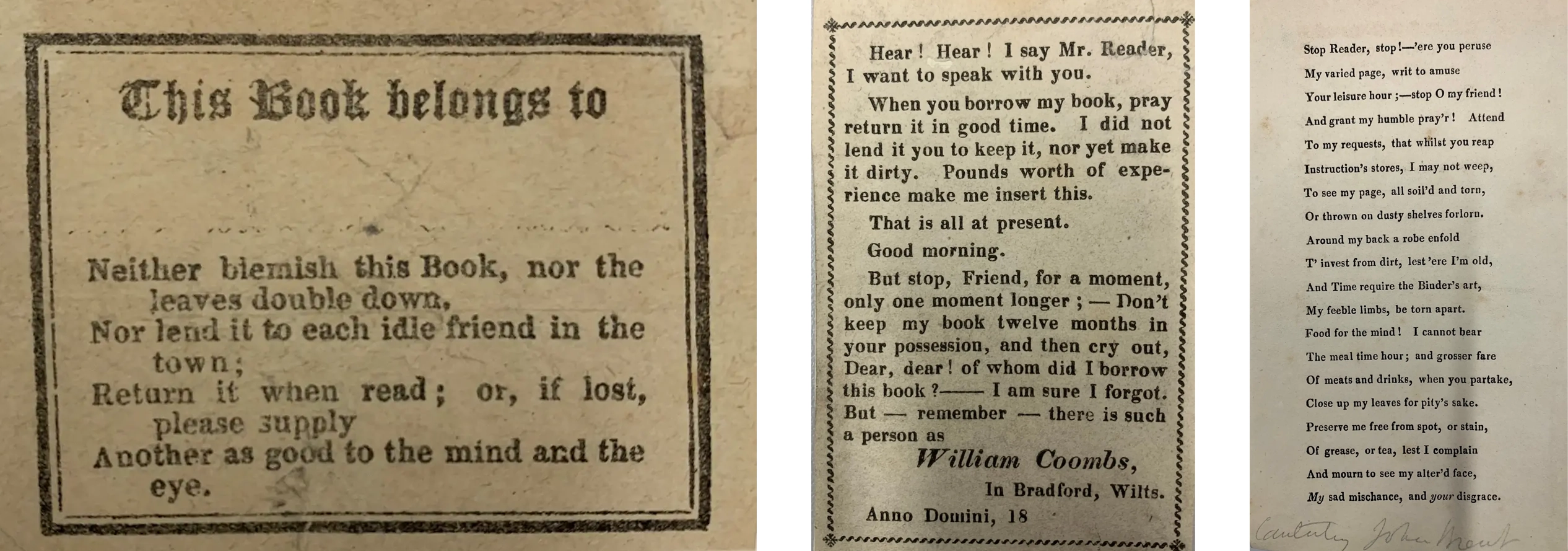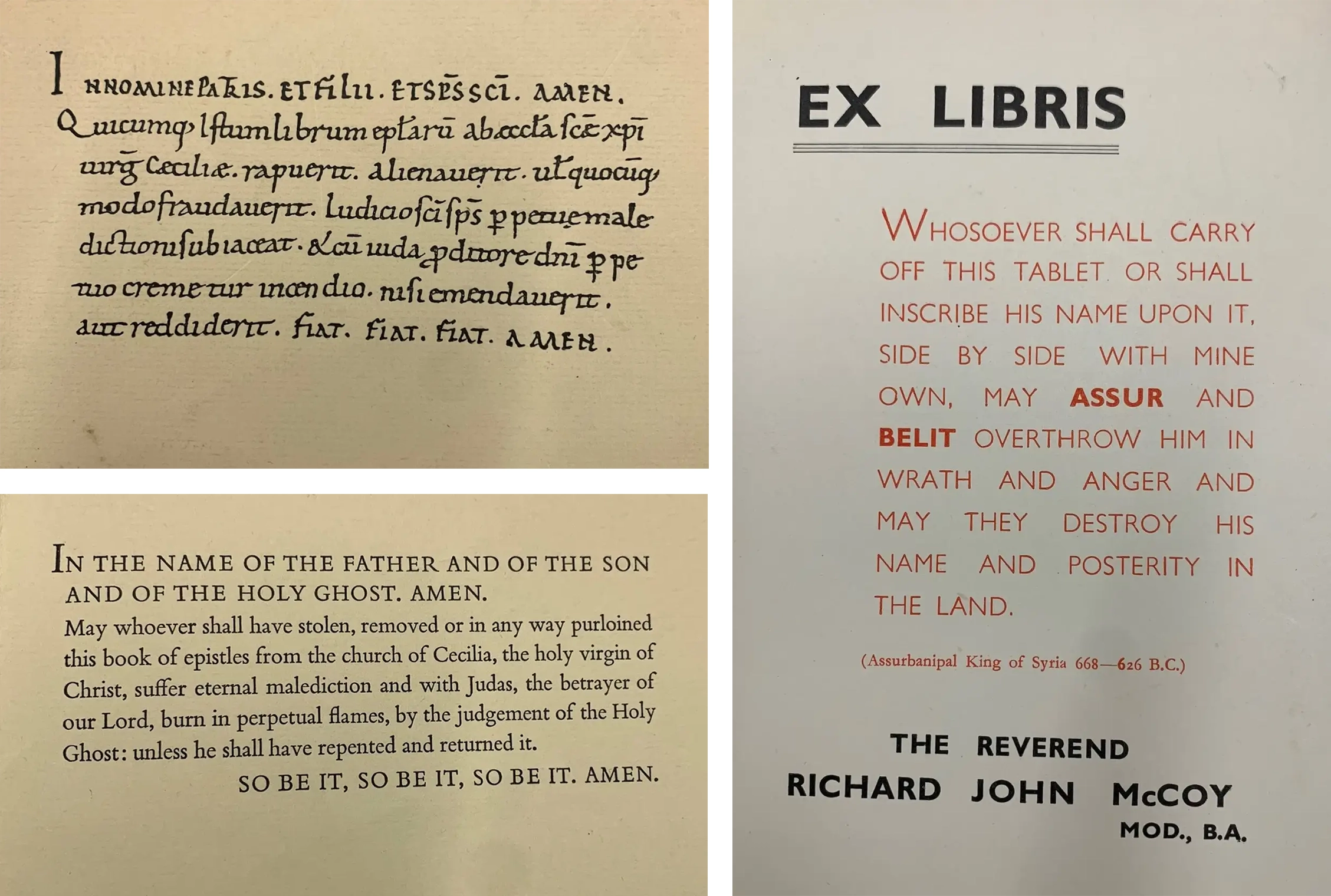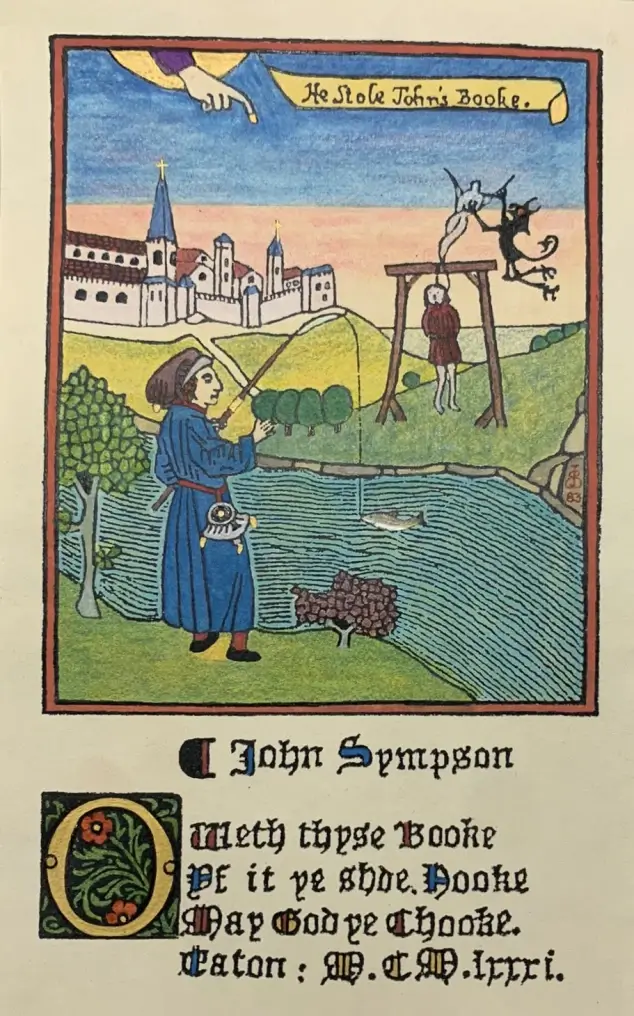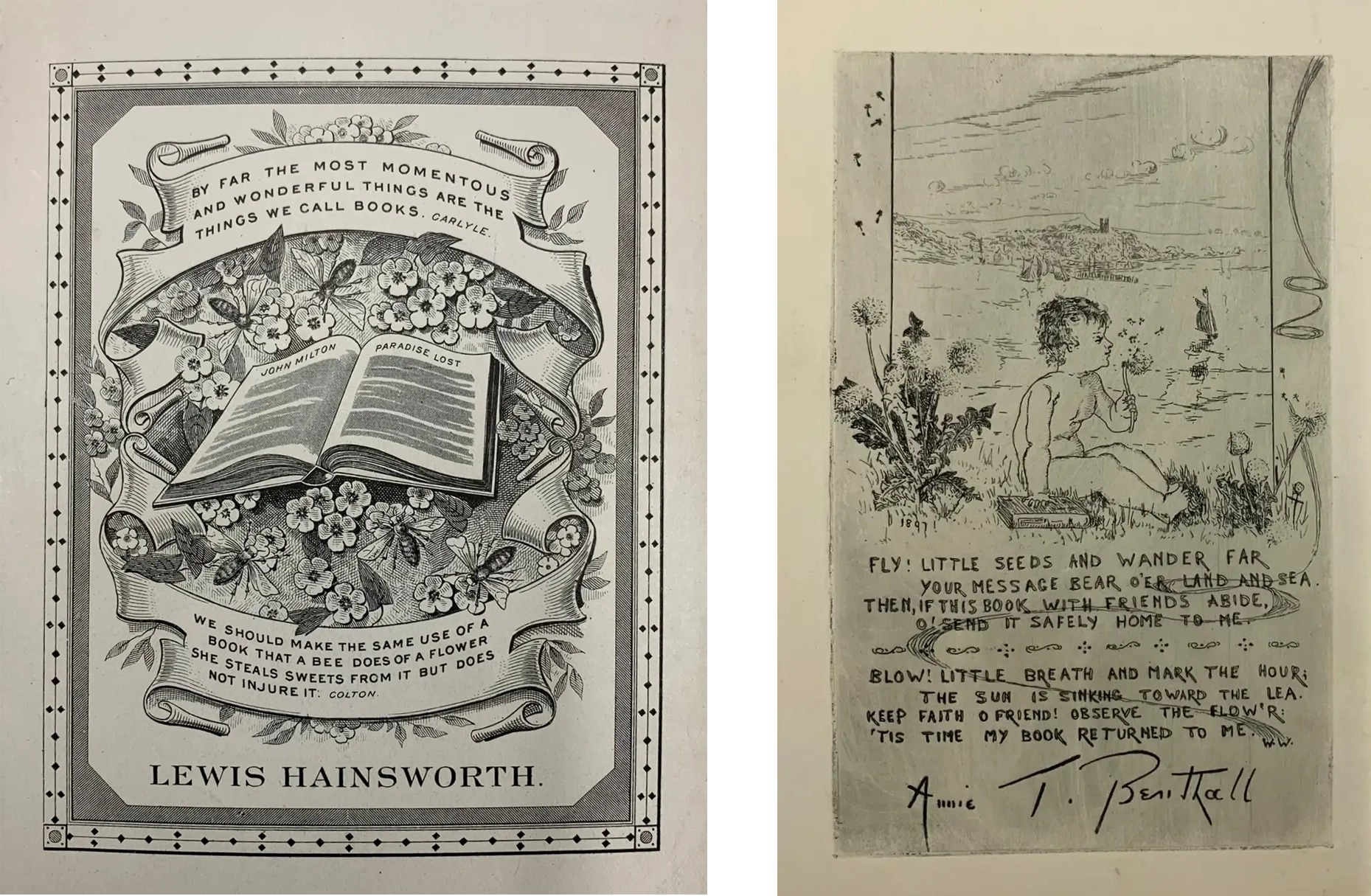Bookplate Stories: Ephraim McDowel Cosgrave
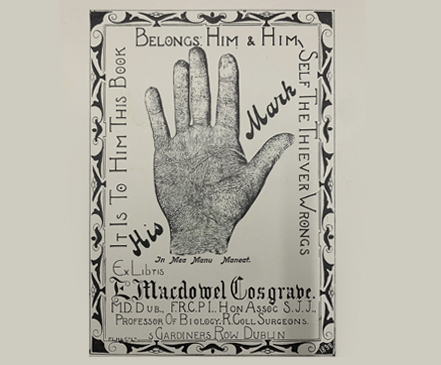
This post is part of a series of stories written by Liz West, Fellow in Ephemera Studies, about the Amoret Tanner bookplate collection. Read more here
·
Story one
‘A bookplate is to the book what a collar is to the dog’
♦
Ephraim McDowel Cosgrave (18 July 1853 – 17 February 1925) was an eminent Irish physician, antiquary and writer. Professor of Biology, Member of Royal College of Surgeons and a knight of the Order of St John of Jerusalem, President of the Dublin Total Abstinence Society, a chess player and keen photographer.
So far in this series we have looked at what bookplates can tell us about their owners, and their interests. However, we mustn’t overlook a key function of the bookplate, decorative or not: to act as a mark of ownership, and as a talisman to secure the book’s safe return. As the artist and theatre designer Edward Gordon Craig put it, ‘a bookplate is to the book what a collar is to the dog‘. Bookplates with this express purpose eschew the purely decorative for words of instruction and caution – they are known in collectors circles as ‘chatty’ bookplates, due to their reliance on text rather than images. Popular from 1820 onwards, many of these plates were ‘universal’, that is, generic designs with a space for the owner’s name to be added in. Popular verses were widely recycled, as can be seen in these variations on the same theme:
The verse seen here also includes practical advice on how to care for the book whilst reading it: ‘Read slowly, Pause frequently, keep cleanly, Return duly, with the corners of the leaves not turned down’. Other instructions can be viewed here:
l-r: 65mm x 60mm; 78mm x 30mm; 160mm x 90mm, AT Collection
Clearly, turning the corner of a page down to mark one’s place is not to be encouraged, nor is eating whilst reading, for fear of greasy finger marks.
Other plates are even more practical, with the inclusion of return addresses. The bookplate of a librarian called Luxmoore Newcombe (1880-1952) requests: ‘To read this book all men are welcome, But, please, when read return to Newcombe’ . He was clearly a man who practised what he preached: he was the author of Library Cooperation in the British Isles (1937). The book examines the principles and practicalities of inter-library loans of books. Initially done on an ad-hoc basis, Newton’s ideas and developments in this field paved the wave for a new generation of librarians keen to unite books with readers, no matter where they may be.
·
Story two
The curse of the bookplate
♦♦
When kindly advice and polite requests failed, book-owners could always take a more serious option. The deployment of a variety of curses upon those who borrowed books and did not return them, was particularly popular in examples of earlier bookplates, during a time when curses were more likely to be taken seriously, perhaps. Even without illustrations, many of the curses invoked are quite graphic, for example, in the case of this 18th Century curse: ) ‘This book belongs to Justin, Archdeacon of Pentonville: if anyone takes it away, may he be cooked in a frying pan and whirled around in Purgatory – and may he be accursed! Amen!’

It’s interesting to observe how blood-thirsty clerics can be. Here’s another couple of examples (the images on the left show the original text and the translation of an inscription in an eleventh century epistle-Lectionary that belonged to the Church of St Cecilia in Rome):
[l: translation printed by David Chambers, Cuckoo Hill Press, Pinner, 1962. r: Bookplate 122mm x 90mm AT Collection]
The curse in this, more decorative, bookplate, is also quite graphic in its threat of fiery damnation:
‘who folds a leafe downe, will toaste browne…’
Bookplate 100mm x 85mm AT Collection
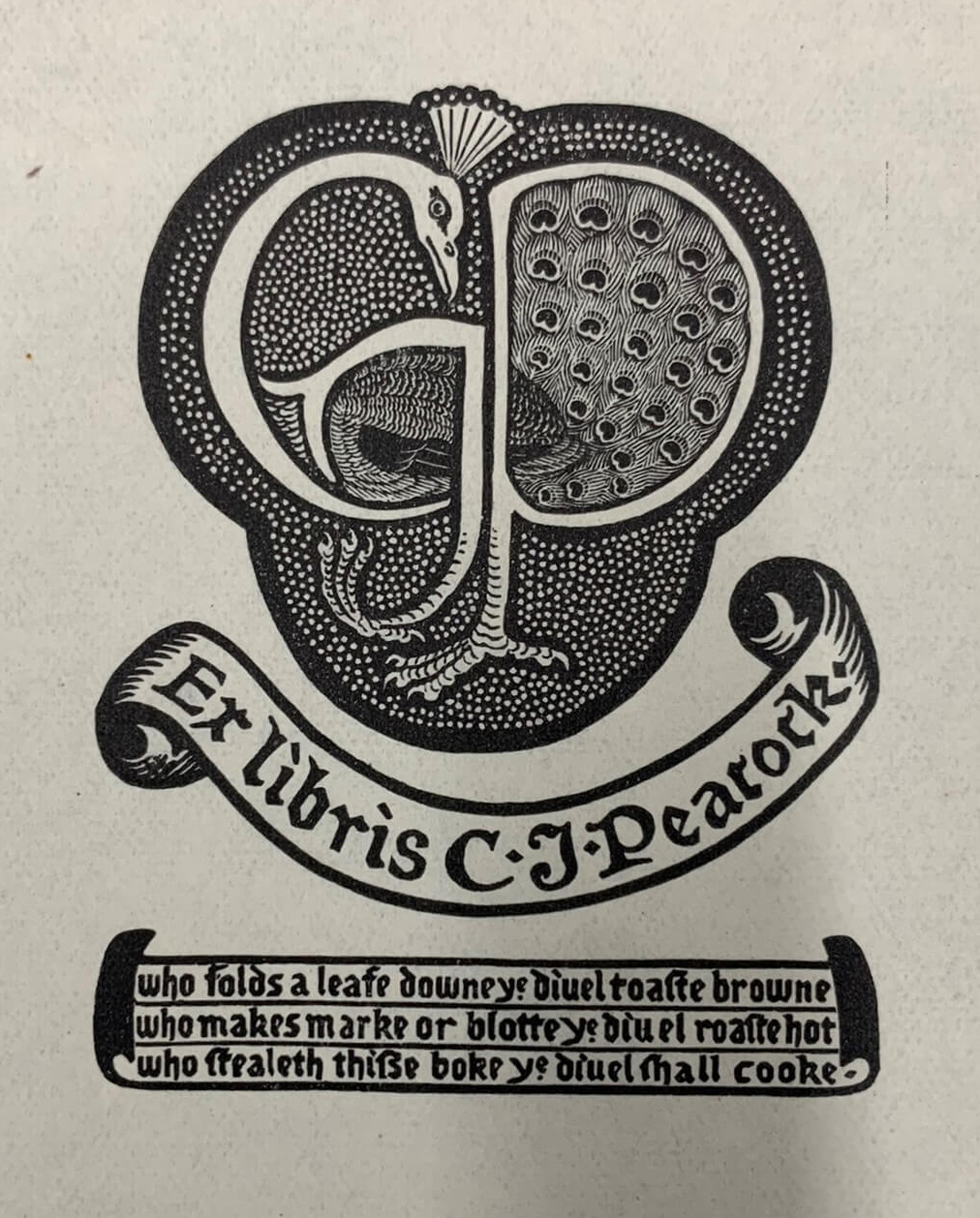
·
Story three
Gallows Humour
♦♦♦
Bookplate 65mm x 56mm AT Collection
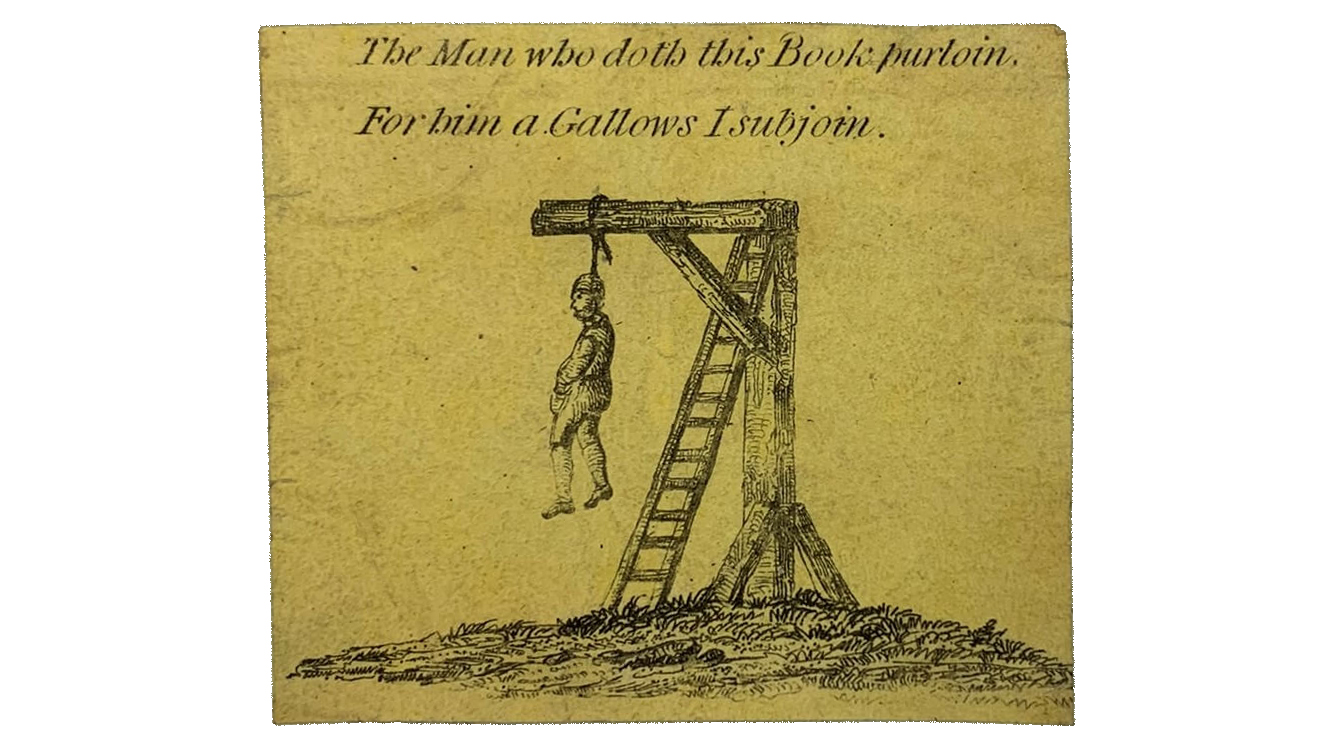
When words failed, a sinister motif was used to get the message across. The image of the gallows became popular in the late 19th century, although its earliest appearance was found in a book inscription from 1540.
In the bookplate above, and in the examples below, the message is quite clearly directed at ‘The Man who doth this Book purloin’:
Bookplate (1919) 90mm x 65mm AT Collection Bookplate 90mm x 62mm AT Collection
However, some indicate a wider malaise, as is the case with this bookplate belonging to Georges Goury. The motto featured, ‘Fert in omnia rutubam et tristitiam terribilis amor’ translates as ‘In all things terrible love brings trouble and sadness’ which implies greater woes than the non-return of a book. Goury (1877-195) was a leading expert in the history of prehistoric France, and an avid book collector. He amassed an important collection of bookplates, some of which he commissioned himself from some of the most fashionable artists at the turn of the 20th century.
Bookplate, designed by Demeufe (1900-10) 103mm x 75mm AT Collection

Bookplate, colour, 135mm x 86mm, AT Collection
Another keen bookplate collector, and member of the Bookplate Society, John Simpson, even designed this ‘gallows’ bookplate for himself.
Returning to France, a variation on the gallows theme beloved by French schoolboys, was the ‘Pierrot Pendu’ – an image of the popular Pierrot clown figure suspended from a gibbet. The accompanying rhyme:
‘Aspice Pierrot Pendu, Parce que librum non a rendu’
is an example of macaronic verse – a mixture of vernacular and Latin words.
Bookplate Whiteman & Bass, Photolitho,120mm x 90mm AT Collection
In a slight diversion from bookplates, but remaining with schoolboys and book-ownership, the Folger Shakespeare Library has a textbook with a scrawled inscription from King Henry VIII, written in his early teens – ‘Thys Boke is Myne Prynce Henry’ – in letters almost an inch high. You can view it here.
·
Story four
Pleas for safe return
♦♦♦♦
Not all bookplates concerned with the safe return of books to their owners resorted to threats or curses, however. Some relied more on appeals to the lendee’s conscience, for example:
[l-r: Bookplates 66mm x 93mm; 94mm x 72mm; 94mm x 65mm, AT Collection]
Others used examples from nature to get their message across:
l-r: Bookplates 145mm x 97mm;(1897)130mm x 92mm AT Collection
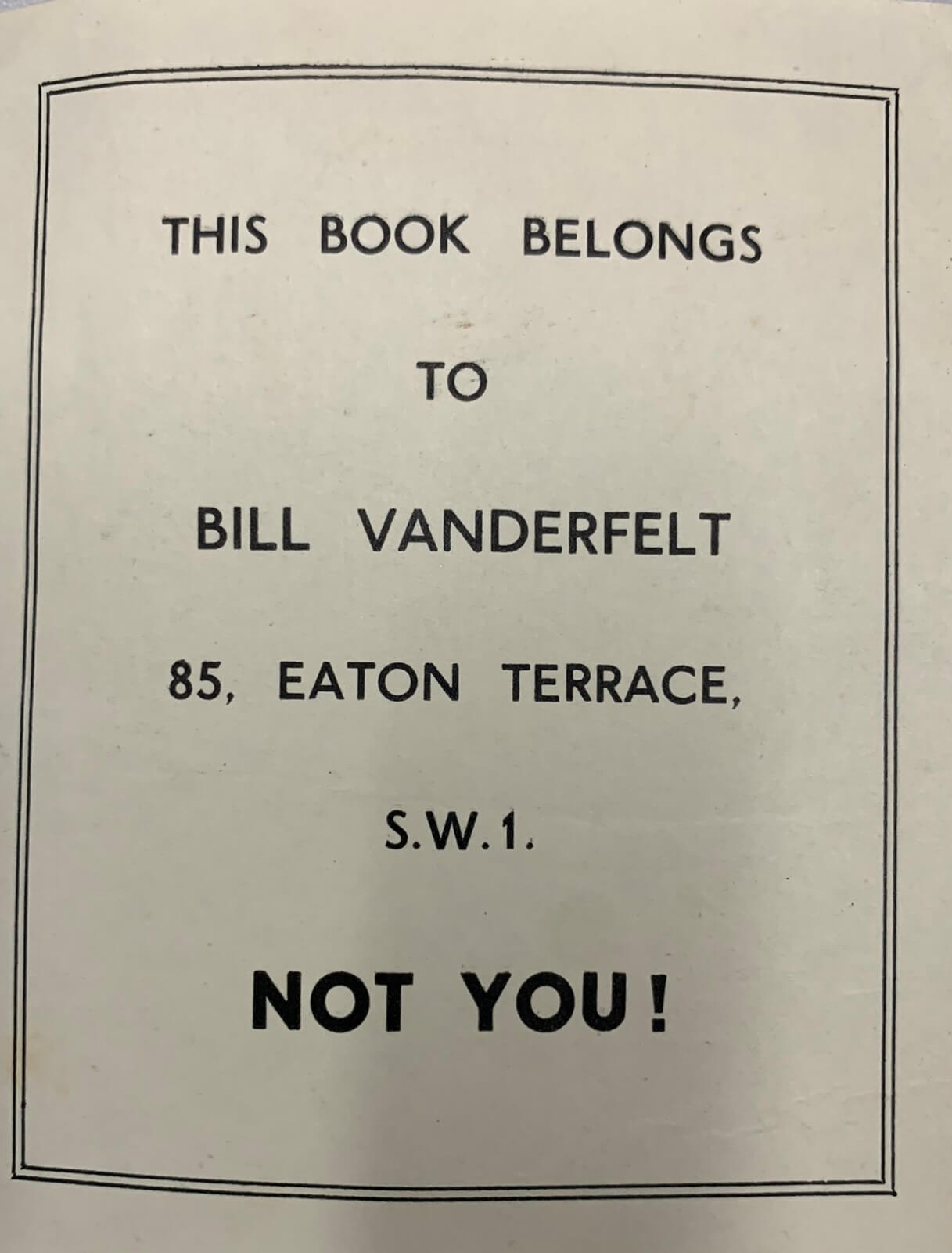 Finally, when all else fails, perhaps the most direct of messages is the most effective!
Finally, when all else fails, perhaps the most direct of messages is the most effective!
Bookplate 95mm x 75mm AT Collection
